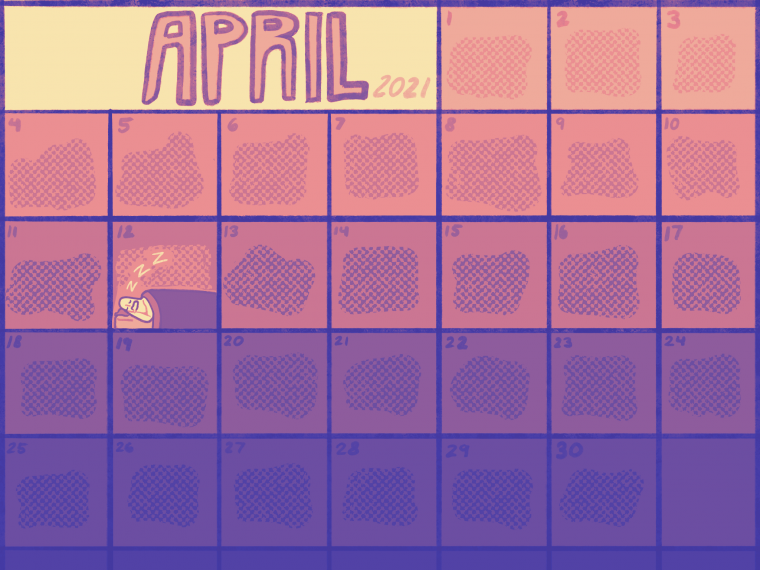Forum | Staff Columnists
Maybe there’s something we can learn from the wellness days

(Graphic by HN Hoffmann)
When the University rolled out its plan for the spring semester and its wellness days, I was among the skeptics. Knowing the struggles of last semester, I was not optimistic about three days—let alone two—being able to replace what Spring Break does for students’ mental health and rejuvenation.
Then, the week of the wellness days came. Sunday rolled around; I looked at my calendar, and there they were—two days of blissful nothing. Before allowing myself to get too excited, I checked Canvas and found an even better gift: My course load for the week had been relaxed significantly, nearly cut in half. What I had to look forward to wasn’t merely two days without class, but two actual days off.
I realized that despite being much longer, the Spring Breaks of the past hadn’t been much of a break at all, but instead just a suspension of classes. Before the break, I’d be swamped with project deadlines and essay drafts, and afterward, quizzes and exams awaited me to ensure I hadn’t forgotten anything during my time off. I couldn’t remember a Spring Break where I didn’t have impending deadlines hanging over my head. Rather than a real period of rest, Spring Breaks were a clock ticking down to the delayed ambush of more assignments as soon as I returned.
This is why, although the empty spaces on my calendar were a welcome reprieve, what I found myself appreciating most about the two days off in March was the way my professors handled them. All of my professors followed the guideline on assignments, with some even relaxing deadlines more than they were required to. When we returned on Thursday and my professors asked how we spent our wellness days, I could honestly say that I spent them well. I took care of myself, and that I didn’t have to worry about a looming midterm assignment that was worth an inordinate amount of my final grade the whole time.
With a crowded semester schedule and little time to waste, it’s understandable that professors feel the need to assign work over breaks, not only to keep their students fresh but keep the pace of their curriculum. But unfortunately, in most cases, all of our professors employ this tactic at the same time, leading to a pileup of work that can feel insurmountable. The concentration of work before and after a break makes it hard to actually destress, disconnect and reset—for students and, I imagine, for professors. This is important during any semester, but especially during this formulaic and impersonal remote/hybrid semester. The restrictions on workload and the reporting system around the wellness days were able to counter that.
How the first two wellness days went for me is how they are supposed to go. I’ve heard from other students who were assigned more work than was supposed to be allowed, and I’m sure that not all of my peers found the days as restful as I did. To be clear, the wellness days system is still a sparse solution to the overwhelming problem of student mental health. We have to do more to protect students and professors alike from the burnout of these endless semesters. However, the policy of keeping course work light around a break and the accountability rooted in that system was one product of these “uncertain times” that we should take with us into a post-COVID-19 academic year.
Did my wellness days apply a metaphorical Band-Aid over all of the ailments of a remote and pandemic-ridden semester? No. But they made my room a little cleaner. I got ten episodes deep into a TV show that I had wanted to start for ages. I deep-treated my hair and had a three-hour-long conversation with my mom. For those two days, taking care of myself wasn’t a treat or a nice surprise but the one and only order of the day. It’s a mindset I’ve been trying to take with me outside of my wellness days, but I needed them to remind me of what that felt like. I’ll be looking forward to the next one.
